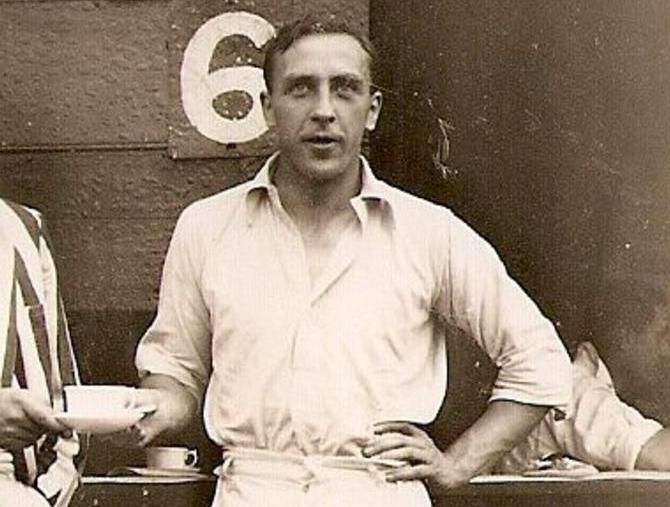
The genius of Kenneth Gandar-Dower
This article was first published in the 2009 Fives Federation Annual Review
Gordon Stringer looks into the career of James Toop’s twentieth century predecessor as master of both codes of Fives.
The outstanding achievement last year of James Toop in winning both the Eton Fives Championship (with fellow Olavian Howard Wiseman) and the Rugby Fives one in the same year has prompted memories of another sporting phenomenon, Kenneth Gandar-Dower. He was the first to achieve this feat in 1932, his Eton Fives partner being fellow Harrovian, G R McConnell. When he announced his intention to enter the Rugby Fives Championship he was ridiculed with remarks that he did not even know the rules of the game. His response was that he would by the time he reached the semi-finals.
At Cambridge, where he was captain of Eton Fives, he represented the university at seven activities – Eton and Rugby Fives, rackets, squash, real tennis, lawn tennis and billiards.In his time he was the leading squash player at Queen's Club and was one of the top players in the country. He once troubled the legendary F D Amr Bey in a club match which The Times described as "... the best game seen, or likely to be seen this season" and the report continues with: "Gandar-Dower thoroughly extended him in the first game, a feat of which no other British amateur is capable". In the 1938 Amateur Championship at the Bath Club, which he won, the Daily Telegraph correspondent concluded: "Of all the players competing, Gandar-Dower gives the impression of having the cleverest brain for the game".
Lawn tennis saw him win the Cambridge University Tournament, become runner-up at the Queen's Club Tournament and play at Wimbledon, where in the second round he took a set from the eventual winner, Henri Cochet. He also played for England.
Recollections of Kenneth often stress that while his ball sense was prodigious, he had the wrong technique for just about every game he tried. At racket sports, many of his victories were tributes to his keen court sense and games eye rather than to his strokes. He is described (somewhat ungrammatically) in The Harrovian as "the worst ever good player of Eton Fives, rackets, squash, real tennis and lawn tennis". The awkwardness can be traced to a childhood nurse who, appalled at his tendency to left-handedness, had forced him to become a right-hander. The ambidexterity did mean that Kenneth was well placed to play Eton Fives and he rapidly became the strongest player in the school, captaining Harrow in his final two years. He proved light on his feet and remarkably agile despite being of above average height. A set of electric reflexes ensured that he was superb at defending the pepper box. Playing on his home court against Eton in April, 1927, he produced the finest performance within living memory. Kenneth could rank amongst the greatest Eton Fives players of all time. As with all games, his style was outrageously unorthodox and he was difficult as a doubles player for the simple reason that his partners never knew where he was. One of his varsity opponents once threw in the towel with: "I give up; it's no good playing against a kangaroo!"
Gordon Stringer and Jeremy Malies
